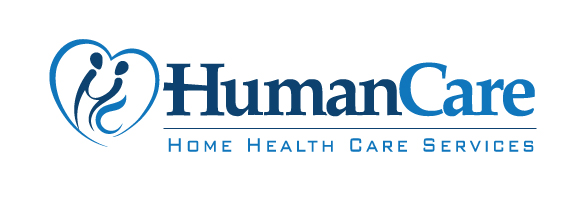Pain Management in Home Care
Innovative Approaches to Managing Pain at Home

Understanding Pain Management in Home Settings
Managing pain effectively in home care environments is crucial for enhancing the quality of life for individuals with chronic pain, serious illnesses, and those recuperating from surgery. As health care systems evolve, there is an increasing demand for comprehensive and personalized pain management solutions that can be administered in the comfort of one's home. This article explores various aspects of pain management in home care, including available services, strategies, and the roles of caregivers and medical professionals.
Personalized Approaches: Managing Chronic Pain at Home

How can chronic pain be managed effectively through home care services?
Chronic pain management at home focuses on creating personalized treatment plans that cater to the unique needs of each individual. At the heart of effective home care services is a comprehensive assessment that allows healthcare providers to identify specific pain causes and to develop targeted strategies to alleviate discomfort.
Key Components of Home Care Pain Management:
- Home Infusion Services: These services allow the administration of medications intravenously, providing timely relief. Adjustments to medication dosages can be made promptly, ensuring that pain is managed effectively.
- In-Home Physical Therapy: Physical therapists assess mobility and create individualized exercise programs aimed at improving strength, flexibility, and function. This proactive approach helps reduce pain and maintain independence.
- Support from Home Health Aides: Aides assist with activities of daily living, which can be adapted based on a patient's pain levels, enhancing overall quality of life while enabling patients to remain self-sufficient.
- Emotional and Psychological Support: Caregivers offer vital emotional support, which is crucial for patients coping with chronic pain. Their presence fosters a sense of connection and encouragement, ultimately enhancing the emotional well-being of patients.
By combining these components, home care services can address both the physical and emotional facets of managing chronic pain, facilitating a better overall experience for individuals in need.
Exploring Comprehensive Pain Management Techniques

What comprehensive pain management techniques are available in home health care?
In-home pain management programs, like those offered by HarmonyCares, utilize a diverse range of comprehensive pain management techniques. These encompass both pharmacological and non-pharmacological strategies tailored to individual patient needs.
Combination of pharmacological and non-pharmacological methods
- Pharmacological Treatments: Medications such as opiates, acetaminophen, and adjuvant analgesics may be used to alleviate pain. For many patients, these pain medications are crucial in achieving a baseline level of comfort.
- Non-Pharmacological Methods: Practices like heat and cold therapy, mindfulness, and therapeutic exercises are emphasized. Techniques such as acupuncture, massage therapy, and neurostimulation also play a significant role in reducing pain without relying solely on medications.
- Team-Based Approach: Collaboration among healthcare providers, including home health aides and nurses, ensures a well-rounded and effective pain management strategy.
Role of structured assessments
Regular and systematic assessments are critical in determining the most effective pain management interventions. The WILDA approach (Words, Intensity, Location, Duration, and Alleviating factors) helps healthcare providers better understand each patient's unique pain experience and refine treatment plans accordingly.
Support for caregivers
Caregivers are pivotal in the pain management process. They provide not only physical support but also emotional aid to enhance patient comfort and motivation. Education about pain management techniques empowers caregivers, while regular communication with healthcare professionals ensures that they remain equipped to respond to their patients’ needs effectively. This holistic approach fosters a supportive environment that can significantly enhance patient well-being.
Treating Muscle Pain in the Elderly: A Gentle Approach

How do you treat muscle pain in the elderly?
To effectively manage muscle pain in older adults, the approach should be gentle yet comprehensive. Starting with over-the-counter pain medications such as acetaminophen or ibuprofen lays the foundation for relief. Additionally, localized treatments, including topical ointments and patches, can provide targeted comfort.
The Importance of Hydration and Diet
Hydration plays a vital role in pain management, as older adults are more susceptible to dehydration. It is recommended that they drink between 60 to 80 ounces of water daily. Furthermore, a balanced diet is essential. Foods rich in omega-3 fatty acids, like fish, as well as those high in minerals and antioxidants, can significantly reduce inflammation and enhance overall well-being.
Benefits of Exercise
Incorporating gentle exercise routines is another effective strategy. Simple activities such as daily stretching for 10-15 minutes not only improve flexibility and maintain muscle tone but also contribute to pain alleviation over time. Regular movement helps to keep muscles functional and responsive.
Additional Support
Exploring the potential benefits of supplements such as turmeric, magnesium, and fish oil can aid in managing muscle pain, but it’s crucial to consult a healthcare provider before adding any new supplements to avoid interactions with existing medications.
| Strategy | Description | Benefits |
|---|---|---|
| Pain Medications | Use acetaminophen or ibuprofen | Provides immediate pain relief |
| Topical Treatments | Apply ointments or patches | Targeted relief for localized pain |
| Hydration | Drink 60 to 80 ounces of water daily | Reduces risk of dehydration |
| Balanced Diet | Include omega-3 fatty acids and antioxidants | Reduces inflammation |
| Gentle Exercise | Stretching for 10-15 minutes daily | Improves flexibility and muscle tone |
| Supplements | Consider turmeric, magnesium, and fish oil | Potential anti-inflammatory benefits (consult a doctor) |
The Three Pillars of Pain Management

What are the three types of pain management?
The three types of pain management typically include pharmacological, interventional, and non-pharmacological treatments.
Pharmacological Treatments
- Utilizes medications such as analgesics and non-steroidal anti-inflammatory drugs (NSAIDs) to relieve pain.
- Often involves a careful monitoring plan, especially for chronic patients on potent medications.
Interventional Procedures
- Includes techniques like nerve blocks, spinal injections, or surgeries that target the source of pain directly.
- Aims to reduce pain intensity substantially, aiding in recovery and rehabilitation.
Non-Pharmacological Therapies
- Encompasses a range of options, including physical therapy, acupuncture, relaxation techniques, and counseling.
- Focuses on improving coping mechanisms and overall well-being, enhancing patients' quality of life.
Combining these methods often leads to a more effective and personalized approach to managing pain. By considering all three pillars, healthcare providers can tailor pain management strategies to individual needs.
Frameworks and Strategies in Pain Management

What are the four P's and the five A's of pain management?
Pain management is a multifaceted approach that involves understanding and addressing various aspects of pain. The four P's encompass:
- Physical: Considerations of the physical impacts and characteristics of pain.
- Psychological: An overview of how pain influences mental health and emotional well-being.
- Pharmacological: The medications used in pain management, which can include both opioids and non-opioid treatments.
- Procedural: Involvement of interventional procedures that may relieve pain.
Accompanying these are the five A's, which are vital for assessing a patient's pain experience:
- Analgesia: Evaluation of pain relief achieved.
- Activity: Monitoring of the patient's ability to engage in daily activities.
- Adverse Reactions: Noting any negative side effects from treatments.
- Aberrant Behavior: Identification of any unusual behaviors related to medication use.
- Affect: Understanding the emotional state of the patient concerning their pain.
Implementing a multimodal strategy that integrates these frameworks enables tailored care based on individual preferences. Moreover, frequent evaluations of the five A's allow for timely adjustments, ultimately enhancing the quality of life and functional capabilities for those living with pain.
Empowering Individuals through Home Care Pain Management
Effective pain management in home settings not only alleviates physical discomfort but also enhances patients' independence and emotional well-being. By integrating personalized care plans, utilizing multiple treatment strategies, and ensuring active involvement of patients and caregivers, home care services offer a robust framework for managing chronic and acute pain. As our understanding of pain management evolves, these home-based solutions continue to play a critical role in improving the quality of life for many individuals.
References
- At-Home Pain Management Program - HarmonyCares
- Managing Pain in Chronically Ill Homebound Patients Through ...
- [PDF] PAIN MANAGEMENT IN HOME HEALTH PRACTICE
- [PDF] Pain assessment and management standards for home health ...
- Pain management in home care - ScienceDirect.com
- Pain management in home care - PubMed
- Palliative Care Methods for Controlling Pain | Johns Hopkins Medicine
- Pain Management Techniques in Home Health - Human Care
- HOMECARE CAN HELP WITH CHRONIC PAIN - Visiting Angels




























































































